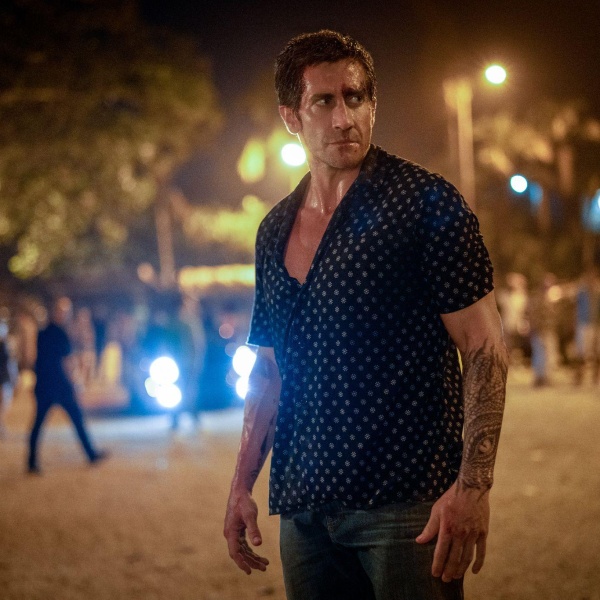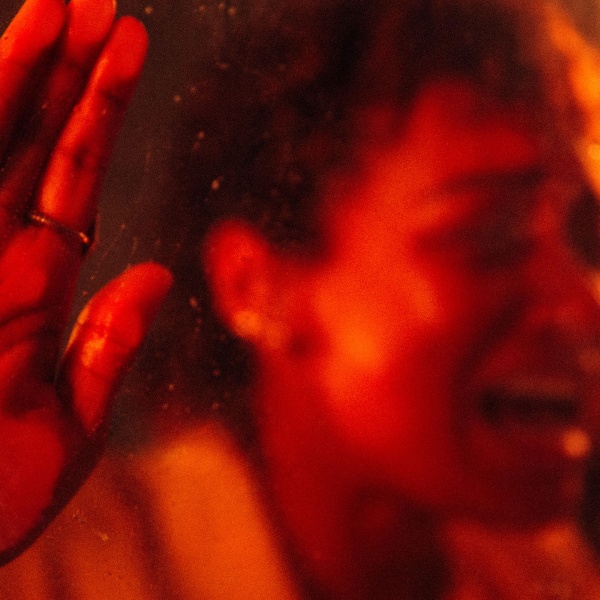Mati Diop cuts a striking figure. This thoughtful filmmaker plunges into her subject matter with curiosity and a sense of moral responsibility. Recall her remarkable narrative feature debut “Atlantics” from 2019, heralded for how its “dark poetry exhumes the psychological duress” experienced by its characters.
A similar compliment can be levied on Diop’s vital second feature “Dahomey,” a by-turns spectral, processual and realist documentary that won the Golden Bear at the 2024 Berlinale. In the film, Diop, who is French and of Senegalese descent, follows the 2021 repatriation of 26 artifacts from the Musée du quai Branly back to their place of origin, Dahomey, once a kingdom in the modern-day West African nation of Benin, which France had pillaged in the 1890s.
Levitating the film on an abstract plane of unease and wonder is Diop’s most distinctive contribution: literally giving a voice, in collaboration with Haitian writer Makenzy Orcel, to one of the artifacts, numbered 26, a statue of renowned King Gezo. “26,” our guide along the voyage of the artifacts’ restitution and processing in Benin, shares sentiments induced by historical oppression via elegiac interludes that bookend the film’s centerpiece: a lively debate about colonization among Beninese university students. Via 26, Diop layers a sense of entombment, mirroring the captivity of the artifacts as they are “torn by the fear of not being recognized by anyone and not recognizing anything.”
With “Dahomey,” Diop crafts a striking figurehead of a symbolic and material journey of significant sociocultural ramifications. The film is Senegal’s submission for the 2025 Academy Award for Best International Feature. For its U.S. premiere at the New York Film Festival, IndieWire spoke to Diop about the film’s reception since Berlinale and her recursive process.
This interview has been condensed and edited for clarity.
IndieWire:Congratulations on “Dahomey” officially entering the Oscar race. Are you looking forward to the next few months?
Mati Diop: It’s a little soon to get excited about it. I’m staying pragmatic. I just experienced the release of the film in France, after it was also released in Benin and Senegal. In France, something very strong happened. The audience really responded. There was a lot of feedback on social media. It was beautiful to witness. I will need to go back to Senegal and Benin to do more outdoor screenings. The Oscars, we will see. I’m trying to stay focused on the present, which is already giving me so much.
Do you remember any particular response in France that stood out to you?
There is a young woman who touched me. She was fearing going to watch the film because colonial legacy can be a heavy subject. She said this film allowed her to dialogue with the issue of the heritage of colonialism. The film manages to really make people question. We live in a very, very, very tough moment where our humanity is really being questioned. People are grateful when you allow them to dialog with issues without making them feel guilty. We need this, and we also need hope! I’m grateful for this film meeting a generation.

A large section of “Dahomey” consists of this amazing debate among young Beninese university students, where they disagree with each other on the issues surrounding repatriation. By contrast, with the film’s main audience to date, in festivals and thus a predominantly Western and white one, do you think you’re already preaching to the converted about the virtues of repatriation?
The subject is so vast, I feel it goes beyond the returning or not returning of artifacts. Even before you ask this question, most people are not even aware that 90% of the artifacts of Africa are locked in European museums. This means that the youth [in Africa] were not able to grow up with the physical and material presence of their history. This is the first thing to open their eyes on, this massive injustice and consequence of colonialism.
It’s also for a certain audience to hear these youth from Africa have such a strong, powerful and fair debate. I think of it as a counter-narrative. We are talking to you from this place. We are talking to you from these mouths. If I imagine a cliche of a certain Western audience — and I hate cliches, making films is fighting against all the stereotypes that colonialism has created, and I don’t want to be the one caricaturing a certain Western Oscar audience — if I were to stupidly create this caricature, I think it would be a slap in the face of a lot of people to hear these African youth talk this way. We hear that Africa is the world’s biggest continent. 70% of the population is [less than] 20 years old. People should be aware that this continent is the future. I think it’s time that a film embodies this massive reality.
As a French woman partly of Senegalese descent, what would you say was your connection to Beninese history, and colonial legacy? Did you have concerns about representing Benin going into the story?
No, because my first relationship to the subject of restitution was not concerning a specific African country. Before “Dahomey,” I already wanted to dedicate a film to stolen artifacts. I was already in the process of writing a feature where the main character is an African mask telling his own story. So when I found out about the 26 treasures from Dahomey, I immediately felt that a film needed to done. As a French Senegalese — well, French African — filmmaker, my duty was to dedicate a film to this. It’s very important to be making our own archives.
I think that ideally, if I had gone to the government of Benin to film the artifacts and if they had told me, “Look, we have a young Beninese filmmaker who already wants to make this film, and we want to support them,” I would have said, “Great!” At the end of the day, a film needs to exist.
But you know what, I felt I was the right person. I think I don’t choose films; I think my films choose me. And this is also why I’m not into [this idea of] legitimation. I’m also very cautious about how and why I’m making things. Each shot I shot — when I put my camera somewhere — is asking me the question of my place, the right place of the eye.
In the future, concerning the African continent, I would prefer to be in a place where there are enough African filmmakers to make the films, and I would become the producer for a Beninese filmmaker. If there’s a second restitution, I think a filmmaker from Benin would be mature enough to do this on their own. I think I am paving a path, just like filmmakers did before me. That’s history.
Speaking of giving people voice, I was under a spell when I first heard the voice of 26. Can you talk about the writing process, and your collaboration with co-writer Makenzy Orcel?
The writing process started in 2017, when I was writing “Atlantics”. That’s when, for the first time, the word “restitution” was pronounced by a French President [Emmanuel Macron]. I realized it was an angle of colonialism that I minimized because of the taboo that it represents in France, and the amnesia that is encouraged around this subject. It was a slap in the face, and I decided that my second feature would be dedicated to the subject of restitution.
I very rapidly got the idea of a lead character having an African mask who would tell his own story from the moment of his deportation to the moment of his repatriation, in the year 2070. So in 2021, when I began this documentary the way I approached the filming, the mise en scene, was very much impacted by the fiction I had in mind.
The collaboration with Makenzy Orcel arrived very late in the process. We first edited the film. Even before Makenzy’s text came, the artifacts in the film were already talking. Even when they were silent, they were so eloquent. When Orcel arrived, he was already impressed by how the artifacts were already alive, in the underground of the museum, in the darkness within the boxes, the dark of the plane, when they return to the streets. This was already built in the film.
Why Orcel in particular?
I wanted to collaborate with a writer from Haiti because the [ancestors] of Haitian people were deported during slavery mostly from Benin. To me, it was obvious the words of the artifacts needed to be written from someone from Haiti; I wanted it to be about the history which we carry with us. Makenzy had the challenge of writing words over images that already said so much. He took a couple of weeks or months to propose something and came back with a very long text. I had the freedom to take parts, to re-edit. I was already sampling music and sound. It was a great collaboration!
As for the voices, it’s not just the statue who speaks, it’s a whole army of souls. I think it’s the Black soul.

How did you actually create the voice. I heard it’s a digital mixture.
Thank you for asking! I knew I needed somebody specific to create that voice with me. It’s a piece of art, this voice in itself. I was very lucky to work with Nicolas Becker, the Oscar-winning sound designer of “Sound of Metal.” We had the text of Makenzy translated into Fon. And then we recorded three different voices. One woman, two men. Nicolas mixed the voice using a software. I wanted this voice to be futuristic, kind of Hollywood-like, and very sci-fi. Our ancestors are stereotyped by the West, who turned our culture into folklore. It’s important to think about the vision of the ancestors you want the audience to have. I hate the vision Western people have of African ancestors. I know how they expect them to move, to dance, to sing.
I had the same question about ancestors. You’re bringing “Dahomey” to the US, where in the last 7-8 years, especially since Marvel released “Black Panther,” there has been an uptick in the pop cultural use of the word “ancestors.” You seem to have a different understanding of the word. What is your opinion on this, and how do you think your film will impact Black Americans?
I am very curious how the film will resonate with the Black American community. “Black Panther” exists now; it has fulfilled its function and is an American perspective [on “ancestors”]. I think “Dahomey” is giving an African perspective. I think it’s time for cinema to welcome African perspectives on the Black experience. [At the same time] I don’t think we should put all these proposals in competition. If “Black Panther” and “The Woman King” have touched so many people, there must be a reason for that.
“Dahomey” had its U.S. premiere at the New York Film Festival. It is Senegal’s submission for the 2025 Best International Feature Oscar.






